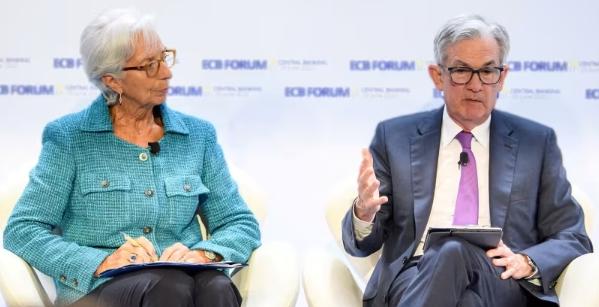In the intricate dance of global finance, interest rate fluctuations can make or break a bank’s bottom line. With Europe seemingly weathering these fluctuations better than the US, the burning question is, why?
The Anatomy of Interest Rate Risks
Understanding interest rate risks in the banking book (IRRBB) has never been more critical. Rapid surges in interest rates have previously taken a toll, especially on US banks, as vividly revealed in a report by Moody’s. This report uncovers the stark contrast between European and American banks in tackling these risks. The American banking landscape, according to the study, has been marred by loose regulation and relaxed supervision, making smaller US banks vulnerable to interest rate shocks. Meanwhile, Europe’s tighter regulatory grip has instilled in its banks a more rigorous risk management regime.
The challenge of IRRBB essentially arises from mismatches: banks need to realign interest-bearing assets and liabilities with fluctuating interest rates. When managed poorly, these mismatches can weaken a bank’s financial stance.
Simon Ainsworth, from Moody’s Investors Service, emphasizes the stringent regulatory measures in Europe.
“In Europe, supervisors can require corrective measures… European banks are also subject to a supervisory outlier test [SOT]… most banks have low appetite for interest rate risk,” he states.
Furthermore, the European Banking Authority’s 2022 guidelines have fortified the region’s defense against such risks.
Diverging Regulatory Trajectories
But while Europe has fortified its regulatory stance, the US, according to David Aikman of King’s College, has been lagging.
“The US has very long-term mortgages, this is a big deal,” he notes.
Highlighting a critical deficiency in US risk management, Tim Breitenstein from KPMG Deutschland points out the absence of the supervisory outlier test (SOT), a tool European banks use to measure and report interest rate risks. The International Monetary Fund (IMF) had also called attention to this gap in 2020, signaling a need for more quantitative approaches.
Moreover, while European banks grapple with variations in risk exposure, especially concerning long-term fixed-rate lending, as seen in several French banks, US banks face the imminent threat of more regional failures. Giorgio Bou-Daher, a lecturer at EM Normandie Business School, notes:
“The small banks, if anything, will become fodder for the large ones.”
Tools for Tackling the Turbulence
As banks across the globe stare at this intricate puzzle of IRRBB, the quest for solutions becomes paramount. For some, the answer lies in interest-rate derivatives or altering the mix of assets and liabilities. Simon Ainsworth elucidates:
“Interest rate risks stemming from structural gaps are relatively linear… This type of risk is therefore generally hedged with interest rate swaps.”
But for David Aikman, formerly with the Bank of England, the magic bullet lies in sturdier capital requirements. Moving from the flexible Basel regulation’s pillar two to the stringent pillar one might be the way forward.
“Increased capital means it doesn’t matter so much about spotting little pockets of risk here or there, or playing catch-up. You get a more resilient system, full stop,” he emphasizes.
In a world where interest rate shifts are the norm, banks’ ability to adapt, shield, and thrive amid these fluctuations will separate the stalwarts from the rest. And as history and current trends show, stringent regulation, smart strategies, and strong capital reserves may well be the trident guarding against the IRRBB tempest.



